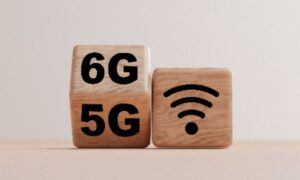Welcome to the wireless revolution! In today’s fast-paced digital world, internet connectivity has become an absolute necessity for everyone. But have you ever wondered about the different types of internet technologies that enable us to stay connected wirelessly? From Wi-Fi to 5G and everything in between, this blog post is here to demystify these wireless wonders and help you understand how they work.
Introduction to Internet Technologies
The internet has become an essential part of our daily lives, connecting us to a vast network of information and services. But have you ever wondered how this amazing technology works? In this section, we will provide an overview of the different types of internet technologies that make it possible for us to access the internet wirelessly.
Understanding Wireless Internet Technologies
Wireless internet technologies have revolutionized the way we connect to the internet, making it more convenient and accessible than ever before. From Wi-Fi to mobile data networks, there are various types of wireless internet technologies that we use in our daily lives. In this section, we will dive deeper into understanding these different technologies and how they work.
1. Wi-Fi:
Wi-Fi stands for Wireless Fidelity and is one of the most commonly used wireless internet technologies. It uses radio waves to transmit data between devices such as laptops, smartphones, and routers within a certain range. The range can vary depending on the type of router and any obstructions in the area.
Wi-Fi technology has evolved over the years, with newer versions being introduced, such as 802.11ac, which offers faster speeds compared to its predecessor, 802.11n. Wi-Fi networks are widely available in public places like cafes, restaurants, shopping malls, airports, etc., allowing users to connect their devices wirelessly without using any cables.
2. Cellular Networks:
Cellular networks are another popular form of wireless internet technology used by mobile devices such as smartphones and tablets. These networks use cellular towers to transmit signals across a wide area, providing coverage for large geographical regions.
Cellular networks use different generations, or “G” (e.g., 3G, 4G), to denote their speed and capabilities. The latest generation is known as 5G, which provides significantly faster speeds than its predecessors.
3.Mobile Hotspots:
Mobile hotspots are devices that use cellular networks to create a Wi-Fi network, allowing other devices to connect to the internet wirelessly. They are usually portable and can be carried around to provide internet access on-the-go.
Mobile hotspots are useful for those who need internet access in areas where Wi-Fi is not available or for people who want to avoid using public Wi-Fi networks for security reasons.
4. Satellite Internet:
Satellite internet is a wireless technology that uses satellites in space to transmit data between the user’s device and the service provider’s network operations center. It is often used in rural or remote areas where other types of internet connectivity may not be available.
Satellite internet has slower speeds compared to other forms of wireless internet due to the distance the signal must travel between the satellite and the user’s device. However, it provides a reliable option for those living in areas with limited connectivity options.
5. Bluetooth:
Bluetooth is a short-range wireless technology used mainly for connecting peripheral devices such as keyboards, mice, speakers, etc., to computers and smartphones. It works by creating a personal area network (PAN) between two devices within a range of approximately 30 feet.
Wired Internet Technologies
Wired Internet Technologies: The Backbone of Our Digital World
In today’s digital age, internet connectivity has become an integral part of our daily lives. From browsing the web to streaming videos, checking emails, and remote working, we rely on the internet for almost everything. While wireless technologies have gained popularity in recent years due to their convenience and mobility, it is important not to overlook the role of wired internet technologies in providing a reliable and secure network connection.
Wired internet technologies involve physical cables or wires that transmit data between devices and networks. These cables are made up of copper or fiber-optic materials and are capable of carrying large amounts of data at high speeds. Let’s take a closer look at some of the most commonly used wired internet technologies:
1. Ethernet
Ethernet is one of the oldest and most widely used forms of wired networking technology. It uses a set of protocols called IEEE 802.3 to connect devices within a local area network (LAN). This type of connection requires an Ethernet cable, which plugs into a device’s Ethernet port, such as a computer or router. Ethernet can support data transfer speeds ranging from 10 Mbps to 100 Gbps, making it suitable for both residential and commercial use.
2. DSL
Digital Subscriber Line (DSL) is another popular wired internet technology that utilizes existing telephone lines to provide high-speed data transmission. The main advantage of DSL is that it does not require additional wiring as it uses the same infrastructure as landline telephones. It operates on frequencies that are different from voice calls, allowing users to make phone calls while simultaneously using the internet.
3. Cable
Cable internet technology uses coaxial cables to transmit data between a user’s device and the internet service provider (ISP). It offers higher speeds than DSL and is capable of delivering both internet and cable TV services. However, since the bandwidth is shared among users in a neighborhood, cable connections can become slow during peak hours when many people are online.
4. Fiber-Optic
Fiber-optic technology uses thin strands of glass or plastic fibers to transmit data at incredibly high speeds. It is currently the fastest wired internet technology available, with speeds reaching up to 10 GB/s. Due to its high bandwidth capacity, fiber-optic is ideal for heavy internet usage, such as streaming 4K videos or online gaming. However, it is not as widely available as other forms of wired connections due to the high cost of installation.
Comparison of Wireless and Wired Internet Technologies
When it comes to accessing the internet, there are two main types of technologies: wireless and wired. While both can provide reliable internet access, they differ in terms of speed, cost, and convenience. In this section, we will take a closer look at the key differences between wireless and wired internet technologies.
1. Speed:
One of the main factors that differentiates wireless and wired internet is speed. Wired connections typically offer faster download and upload speeds compared to wireless connections. This is because wired connections use physical cables to transmit data, while wireless connections rely on radio waves, which can be affected by interference or distance from the router. As a result, tasks such as streaming high-definition videos or gaming may perform better on a wired connection.
2. Cost:
The cost of setting up a wireless network is generally higher than that of a wired network. This is due to the additional equipment needed for wireless connectivity, such as routers and adapters. On the other hand, most modern devices come with built-in Wi-Fi capabilities, making it easier to set up a wireless connection without any extra costs involved.
3. Convenience:
Wireless internet technology offers greater convenience compared to its wired counterpart. With a wireless connection, you are not restricted by physical cords or cables, which can limit movement around your home or office. You can connect multiple devices simultaneously without having to worry about tangled wires or ports being occupied.
On the other hand, with wired connections, you need an Ethernet cable connected directly from your device to the router for an internet connection. This limits mobility and restricts the number of devices that can be connected at one time.
4. Reliability:
Wired connections are generally more reliable as they are not susceptible to interference, signal loss, or outages like wireless networks. This is especially important for tasks that require a stable connection, such as video conferencing or online gaming. In contrast, wireless networks can experience interruptions due to external factors such as weather conditions or physical barriers like walls and furniture.
5. Security:
Wired connections are considered more secure compared to wireless connections. With a wired connection, the data is transmitted through a physical cable, which makes it difficult for hackers to intercept. In contrast, wireless networks can be vulnerable to cyberattacks if proper security measures are not in place.
Real-life Applications of Different Internet Technologies
The internet has become an integral part of our daily lives, and it is constantly evolving to cater to our ever-changing needs. From staying connected with friends and family to conducting business operations, the internet has revolutionized the way we live, work, and communicate. In this section, we will explore some real-life applications of different internet technologies that have made our lives easier and more efficient.
1. Wi-Fi Technology: Wi-Fi technology allows us to connect multiple devices wirelessly to a network, providing access to the internet without the need for cables or wires. This technology has transformed the way we use the internet in our homes and workplaces. We can now stream movies and TV shows on our laptops, tablets, or smartphones, make video calls with friends and family from anywhere in the world, and even control smart home devices using a Wi-Fi connection.
2. Mobile Internet: With advancements in mobile technology, we can now access high-speed internet on-the-go through our smartphones. Mobile internet has changed how we stay connected while traveling or away from home. We can check emails, browse social media platforms, and even conduct online transactions seamlessly with just a few taps on our phones.
3. Cloud Computing: The concept of cloud computing has transformed data storage and management for individuals as well as businesses. Instead of relying on physical storage devices like hard drives or USBs, cloud computing allows us to store data remotely on servers accessed through the internet. This technology eliminates the risk of losing important data due to hardware failure or damage and provides easy access to files from any location.
4. Social Media: Social media platforms have become a key part of our personal and professional lives, connecting us with people all over the world. We can share photos, videos, and thoughts with our friends and followers in real-time through platforms like Facebook, Instagram, Twitter, etc. Moreover, businesses use social media for marketing and advertising purposes, as it allows them to reach a large audience at a low cost.
5. E-commerce: The rise of e-commerce has made online shopping a convenient option for many people. With just a few clicks, we can purchase products from all over the world and have them delivered to our doorstep. E-commerce websites use internet technologies, such as secure payment gateways and encryption, to ensure safe transactions.
Conclusion:
Wireless technologies have greatly expanded our access to the internet and have made it possible for us to stay connected wherever we go. With the different options available, users can choose the type of connectivity that best suits their needs and location. The future of wireless internet looks promising, with advancements such as 5G technology on the horizon, offering even faster speeds and improved connectivity.



































